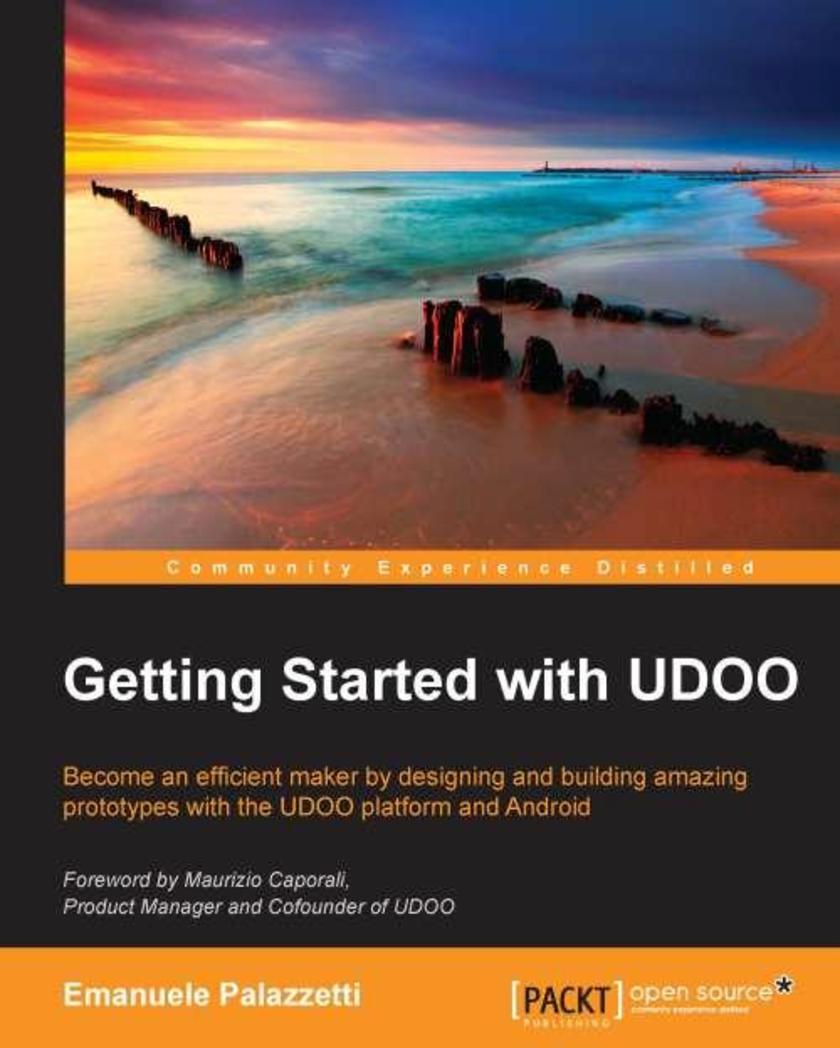
Getting Started with UDOO
¥54.49
If you are an Android developer who wants to learn how to use UDOO to build Android applications that are capable of interacting with their surrounding environment, then this book is ideal for you. Learning UDOO is the next great step to start building your first real-world prototypes powered by the Android operating system.
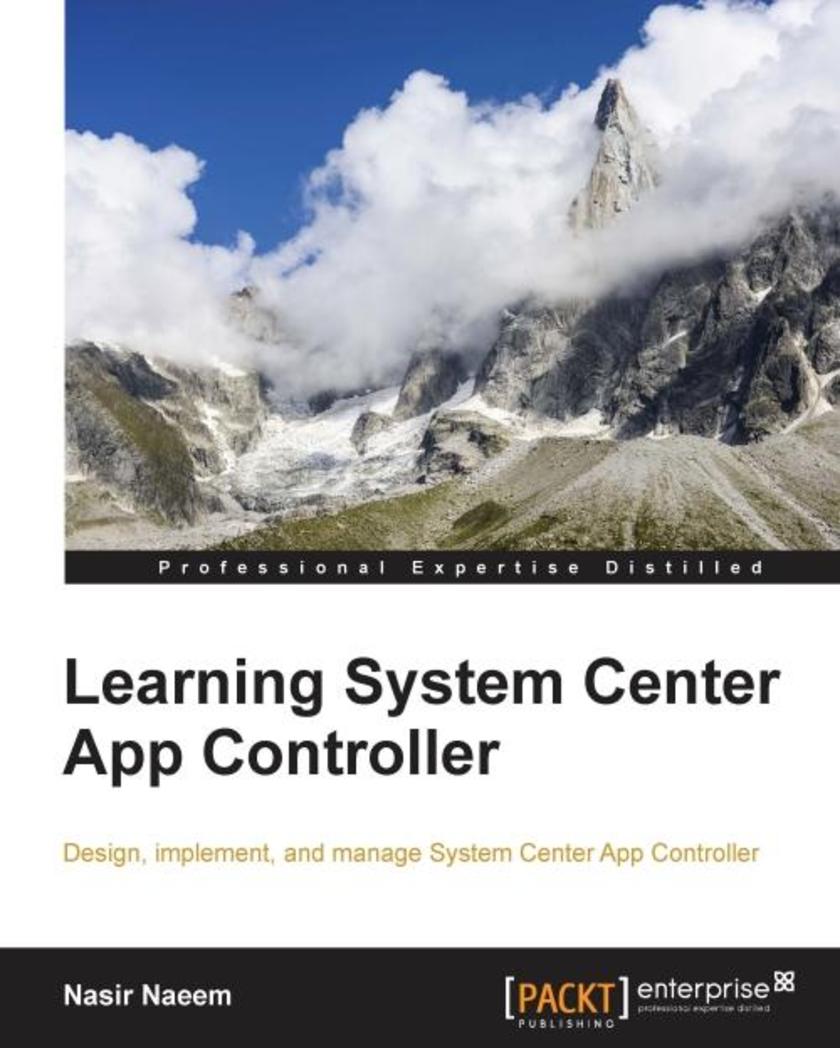
Learning System Center App Controller
¥54.49
This book is intended for IT professionals working with Hyper-V, Azure cloud, VMM, and private cloud technologies who are looking for a quick way to get up and running with System Center 2012 R2 App Controller. To get the most out of this book, you should be familiar with Microsoft Hyper-V technology. Knowledge of Virtual Machine Manager is helpful but not mandatory.
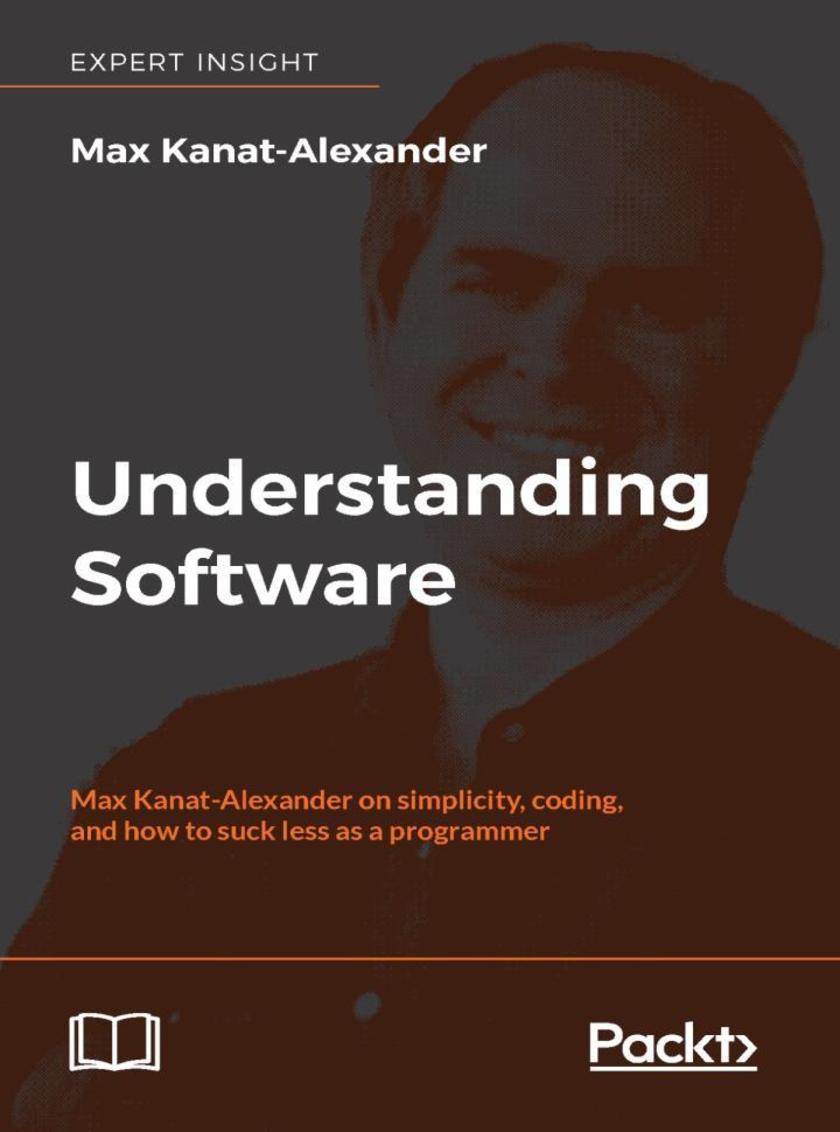
Understanding Software
¥54.49
Software legend Max Kanat-Alexander shows you how to succeed as a developer by embracing simplicity, with forty-three essays that will help you really understand the software you work with. About This Book ? Read and enjoy the superlative writing and insights of the legendary Max Kanat-Alexander ? Learn and reflect with Max on how to bring simplicity to your software design principles ? Discover the secrets of rockstar programmers and how to also just suck less as a programmer Who This Book Is For Understanding Software is for every programmer, or anyone who works with programmers. If life is feeling more complex than it should be, and you need to touch base with some clear thinking again, this book is for you. If you need some inspiration and a reminder of how to approach your work as a programmer by embracing some simplicity in your work again, this book is for you. If you’re one of Max’s followers already, this book is a collection of Max’s thoughts selected and curated for you to enjoy and reflect on. If you’re new to Max’s work, and ready to connect with the power of simplicity again, this book is for you! What You Will Learn ? See how to bring simplicity and success to your programming world ? Clues to complexity - and how to build excellent software ? Simplicity and software design ? Principles for programmers ? The secrets of rockstar programmers ? Max’s views and interpretation of the Software industry ? Why Programmers suck and how to suck less as a programmer ? Software design in two sentences ? What is a bug? Go deep into debugging In Detail In Understanding Software, Max Kanat-Alexander, Technical Lead for Code Health at Google, shows you how to bring simplicity back to computer programming. Max explains to you why programmers suck, and how to suck less as a programmer. There’s just too much complex stuff in the world. Complex stuff can’t be used, and it breaks too easily. Complexity is stupid. Simplicity is smart. Understanding Software covers many areas of programming, from how to write simple code to profound insights into programming, and then how to suck less at what you do! You'll discover the problems with software complexity, the root of its causes, and how to use simplicity to create great software. You'll examine debugging like you've never done before, and how to get a handle on being happy while working in teams. Max brings a selection of carefully crafted essays, thoughts, and advice about working and succeeding in the software industry, from his legendary blog Code Simplicity. Max has crafted forty-three essays which have the power to help you avoid complexity and embrace simplicity, so you can be a happier and more successful developer. Max's technical knowledge, insight, and kindness, has earned him code guru status, and his ideas will inspire you and help refresh your approach to the challenges of being a developer. Style and approach Understanding Software is a new selection of carefully chosen and crafted essays from Max Kanat-Alexander's legendary blog call Code Simplicity. Max’s writing and thoughts are great to sit and read cover to cover, or if you prefer you can drop in and see what you discover new every single time!
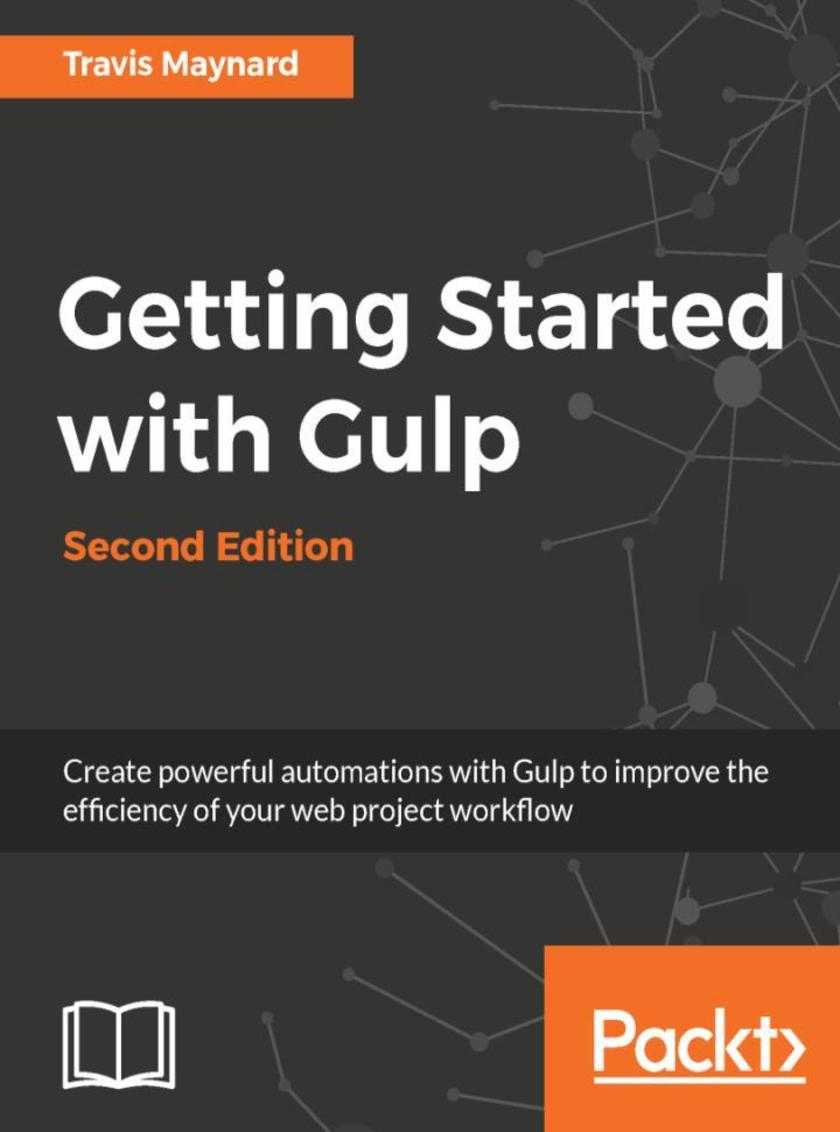
Getting Started with Gulp – Second Edition
¥54.49
"Key Features ?Gain a solid understanding of Gulp and write your own custom tasks from scratch ?Discover ways to add additional functionality to improve your tasks ?Get up-and-running with new features added to the latest version of Gulp Book De*ion This book is a hands-on guide to get you up to speed with gulp. You will quickly learn how to install, configure, and run your own build system. It will instill you with the ability to automate several common development tasks to vastly improve your development workflow. This book first demonstrates various Gulp use cases before running through the steps of configuring, running, and customizing Gulp, providing you with core concepts of gulp, node.js, and npm. Diving a bit deeper into the gulp ecosystem, we will discuss when and why to use a node module instead of a gulp plugin. We will also go over a few issues that we can run into while using gulp and learn about ways to work around them to improve your gulp experience. By the end of this book, you will be able to create your very own gulp build from scratch, create and maintain tasks and project builds, and automate your workflow with plugins and custom tasks. What you will learn ?How to use a command-line interface. ?Learn about Gulp, Node.js, and npm and how they work together. ?Create a Gulpfile from scratch and implement it into a project. ?Write basic tasks that will concatenate, minify, compress, and pre-process your files. ?Write advanced tasks that will run a local server, sync file changes to your browser, and allow you to write client-side JavaScript using ES2015. "
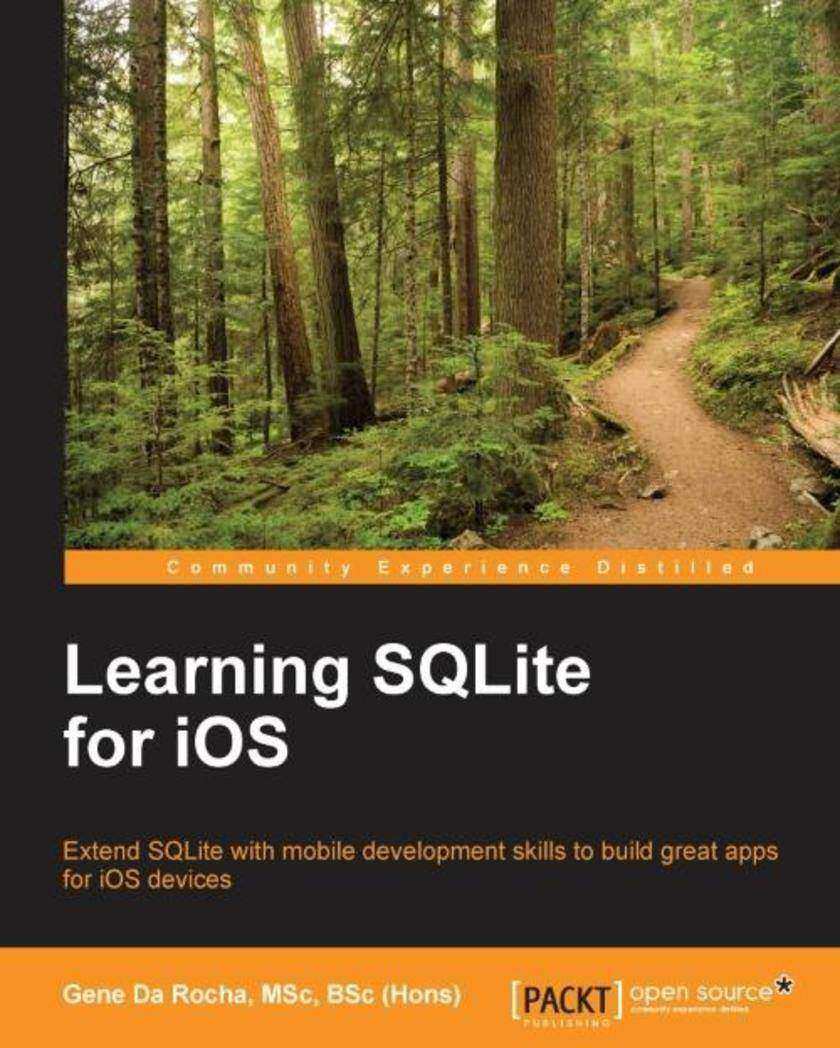
Learning SQLite for iOS
¥54.49
Extend SQLite with mobile development skills to build great apps for iOS devices About This Book Implement Swift code using SQLite statements Learn the background to SQL and SQLite for mobile development, its statements, and command features through practical examples Extend the standard SQLite functionality and increase your software creation portfolio Who This Book Is For This book is intended for those who want to learn about SQLite and how to develop apps in Swift or HTML5 using SQLite. Whether you are an expert Objective-C programmer or new to this platform, you'll learn quickly, grasping the code in real-world apps to use Swift. What You Will Learn Explore Swift's basic language statements Connect to SQLite and execute SQL statements Extend the SQLite language to create your own software extensions Use HTML5 with Phonegap on iOS Set up a Swift project using XCode with SQLite Administer SQLite databases in an easy and effective way In Detail The ability to use SQLite with iOS provides a great opportunity to build amazing apps. Apple's iOS SDK provides native support for SQLite databases. This combination offers the potential to create powerful, data-persistent applications. This book starts with the architecture of SQLite database and introduces you to concepts in SQL . You will find yourself equipped to design your own database system, administer it, and maintain it. Further, you will learn how to operate your SQLite databases smoothly using SQL commands. You will be able to extend the functionality of SQLite by using its vast arsenal of C API calls to build some interesting, exciting, new, and intelligent data-driven applications. Understand how Xcode, HTML5, and Phonegap can be used to build a cross-platform modern app which can benefit from all these technologies - all through creating a complete, customizable application skeleton that you can build on for your own apps. Style and approach This book is a practical and comprehensive guide to developing applications using SQLite and iOS.
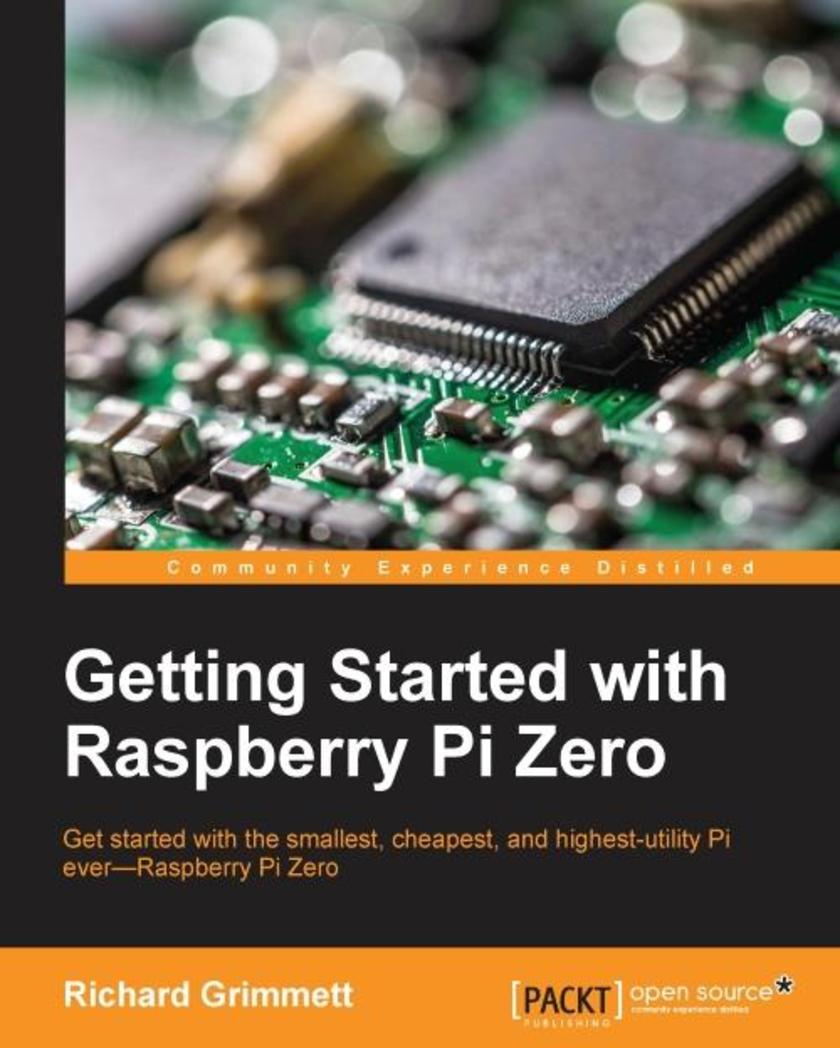
Getting Started with Raspberry Pi Zero
¥54.49
Get started with the smallest, cheapest, and highest-utility Pi ever—Raspberry Pi Zero About This Book Get started with Raspberry Pi Zero and put all of its exciting features to use Create fun games and programs with little or no programming experience Learn to use this super-tiny PC to control hardware and software for work, play, and everything else Who This Book Is For This book is for hobbyists and programmers who are taking their first steps toward using Raspberry Pi Zero. No programming experience is required, although some Python programming experience might be useful. What You Will Learn Understand how to initially download the operating system and set up Raspberry Pi Zero Find out how to control the GPIO pins of Raspberry Pi Zero to control LED circuits Get to grips with adding hardware to the GPIO to control more complex hardware such as motors Add USB control hardware to control a complex robot with 12 servos Include speech recognition so that projects can receive commands Enable the robot to communicate with the world around it by adding speech output Control the robot from a distance and see what the robot is seeing by adding wireless communication Discover how to build a Robotic hand and a Quadcopter In Detail Raspberry Pi Zero is half the size of Raspberry Pi A, only with twice the utility. At just three centimeters wide, it packs in every utility required for full-fledged computing tasks. This practical tutorial will help you quickly get up and running with Raspberry Pi Zero to control hardware and software and write simple programs and games. You will learn to build creative programs and exciting games with little or no programming experience. We cover all the features of Raspberry Pi Zero as you discover how to configure software and hardware, and control external devices. You will find out how to navigate your way in Raspbian, write simple Python *s, and create simple DIY programs. Style and approach This is a practical and fun ?getting startedtutorial that will guide you through everything new that the Raspberry Pi has to offer.
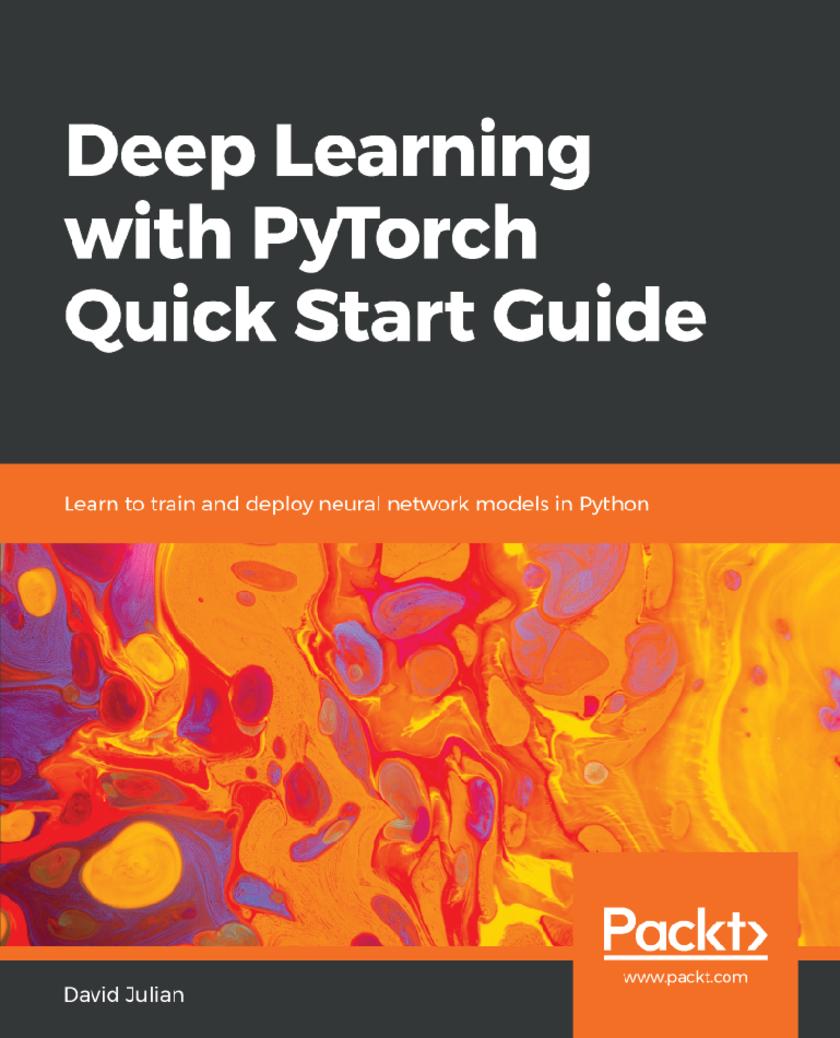
Deep Learning with PyTorch Quick Start Guide
¥54.49
Introduction to deep learning and PyTorch by building a convolutional neural network and recurrent neural network for real-world use cases such as image classification, transfer learning, and natural language processing. Key Features *Clear and concise explanations *Gives important insights into deep learning models *Practical demonstration of key concepts Book Description PyTorch is extremely powerful and yet easy to learn. It provides advanced features, such as supporting multiprocessor, distributed, and parallel computation. This book is an excellent entry point for those wanting to explore deep learning with PyTorch to harness its power. This book will introduce you to the PyTorch deep learning library and teach you how to train deep learning models without any hassle. We will set up the deep learning environment using PyTorch, and then train and deploy different types of deep learning models, such as CNN, RNN, and autoencoders. You will learn how to optimize models by tuning hyperparameters and how to use PyTorch in multiprocessor and distributed environments. We will discuss long short-term memory network (LSTMs) and build a language model to predict text. By the end of this book, you will be familiar with PyTorch's capabilities and be able to utilize the library to train your neural networks with relative ease. What you will learn *Set up the deep learning environment using the PyTorch library *Learn to build a deep learning model for image classification *Use a convolutional neural network for transfer learning *Understand to use PyTorch for natural language processing *Use a recurrent neural network to classify text *Understand how to optimize PyTorch in multiprocessor and distributed environments *Train, optimize, and deploy your neural networks for maximum accuracy and performance *Learn to deploy production-ready models Who this book is for Developers and Data Scientist familiar with Machine Learning but new to deep learning, or existing practitioners of deep learning who would like to use PyTorch to train their deep learning models will find this book to be useful. Having knowledge of Python programming will be an added advantage, while previous exposure to PyTorch is not needed.
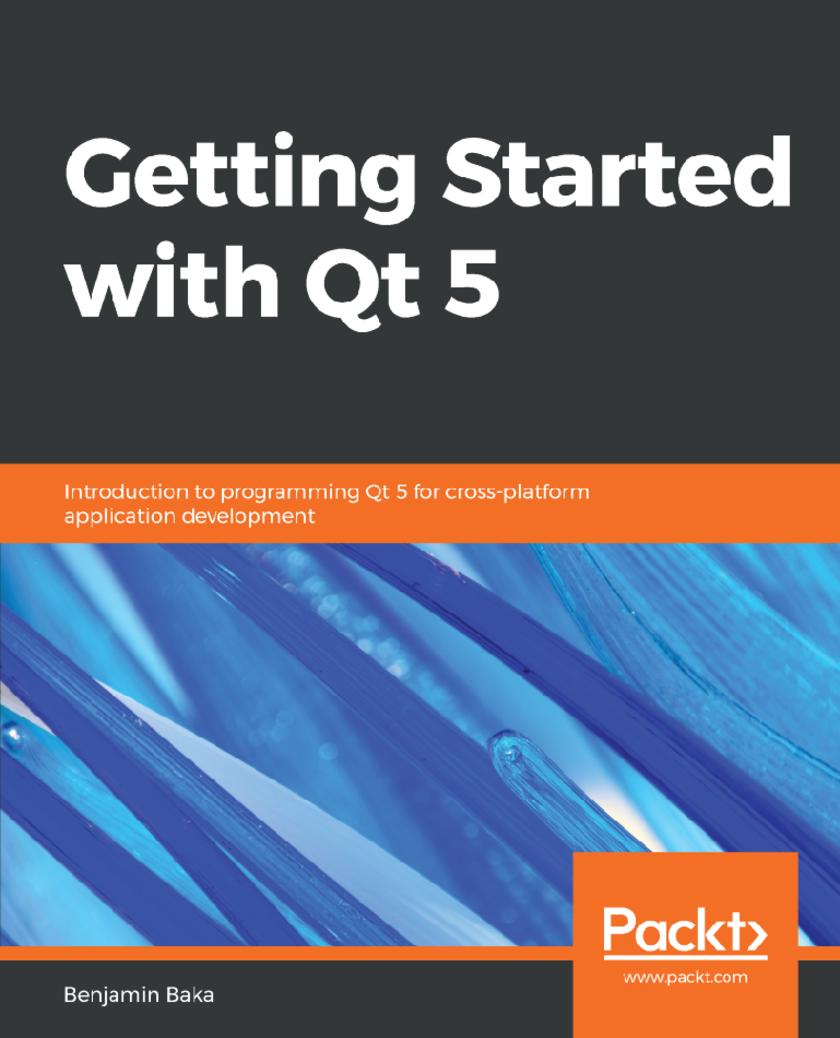
Getting Started with Qt 5
¥54.49
Begin writing graphical user interface(GUI) applications for building human machine interfaces with a clear understanding of key concepts of the Qt framework Key Features * Learn how to write, assemble, and build Qt application from the command line * Understand key concepts like Signals and Slots in Qt * Best practices and effective techniques for designing graphical user interfaces using Qt 5 Book Description Qt is a cross-platform application framework and widget toolkit that is used to create GUI applications that can run on different hardware and operating systems. The main aim of this book is to introduce Qt to the reader. Through the use of simple examples, we will walk you through building blocks without focusing too much on theory. Qt is a popular tool that can be used for building a variety of applications, such as web browsers, media players such as VLC, and Adobe Photoshop. Following Qt installation and setup, the book dives straight into helping you create your first application. You will be introduced to Widgets, Qt's interface building block, and the many varieties that are available for creating GUIs. Next, Qt's core concept of signals and slots are well illustrated with sufficient examples. The book further teaches you how to create custom widgets, signals and slots, and how to communicate useful information via dialog boxes. To cap everything off, you will be taken through writing applications that can connect to databases in order to persist data. By the end of the book, you should be well equipped to start creating your own Qt applications and confident enough to pick up more advanced Qt techniques and materials to hone your skills. What you will learn * Set up and configure your machine to begin developing Qt applications * Discover different widgets and layouts for constructing UIs * Understand the key concept of signals and slots * Understand how signals and slots help animate a GUI * Explore how to create customized widgets along with signals and slots * Understand how to subclass and create a custom windows application * Understand how to write applications that can talk to databases. Who this book is for Anyone trying to start development of graphical user interface application will find this book useful. One does not need prior exposure to other toolkits to understand this book. In order to learn from this book you should have basic knowledge of C++ and a good grasp of Object Oriented Programming. Familiarity with GNU/Linux will be very useful though it's not a mandatory skill.
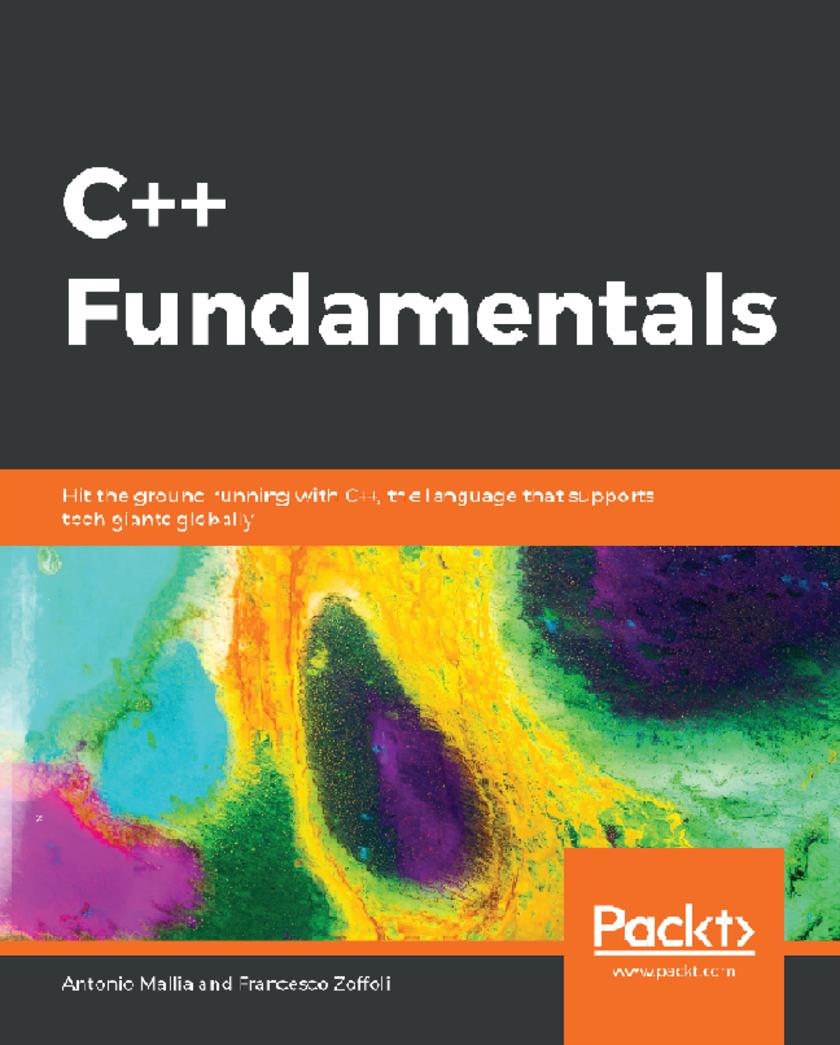
C++ Fundamentals
¥54.49
Write high-level abstractions while retaining full control of the hardware, performances, and maintainability. Key Features * Transform your ideas into modern C++ code, with both C++11 and C++17 * Explore best practices for creating high-performance solutions * Understand C++ basics and work with concrete real-world examples Book Description C++ Fundamentals begins by introducing you to the C++ syntax. You will study the semantics of variables along with their advantages and trade-offs, and see how they can be best used to write safe and efficient code. With the help of this book, you’ll be able to compile fully working C++ programs and understand how variables, references, and pointers can be used to manipulate the state of the program. Then you'll explore functions and classes — the features that C++ offers to organize a program — and use them to solve more complex problems such as functions and classes. You’ll also understand common pitfalls and modern best practices, especially the ones that diverge from the C++98 guideline. As you advance through the chapters, you’ll study the advantages of generic programming and write your own templates to make generic algorithms that work with any type. This C++ book will guide you in fully exploiting standard containers and understanding how to pick the appropriate container for each problem. You will even work with a variety of memory management tools in C++. By the end of this book, you will not only be able to write efficient code, but also be equipped to improve the readability, performance, and maintainability of your programs using standard algorithms. What you will learn * Work with the C++ compilation model and syntaxes * Apply best practices for writing functions and classes * Write safe, generic, and efficient code with templates * Explore the containers that C++ standard offers * Discover the new paradigms introduced with C++11, C++14, and C++17 * Get to grips with the core language features of C++ * Abstract complex problems using object-oriented programming in C++ Who this book is for If you’re a developer looking to learn a new powerful language or are familiar with C++ but want to update your knowledge with modern paradigms of C++11, C++14, and C++17, this book is for you. To easily understand the concepts in the book, you must be familiar with the basics of programming.
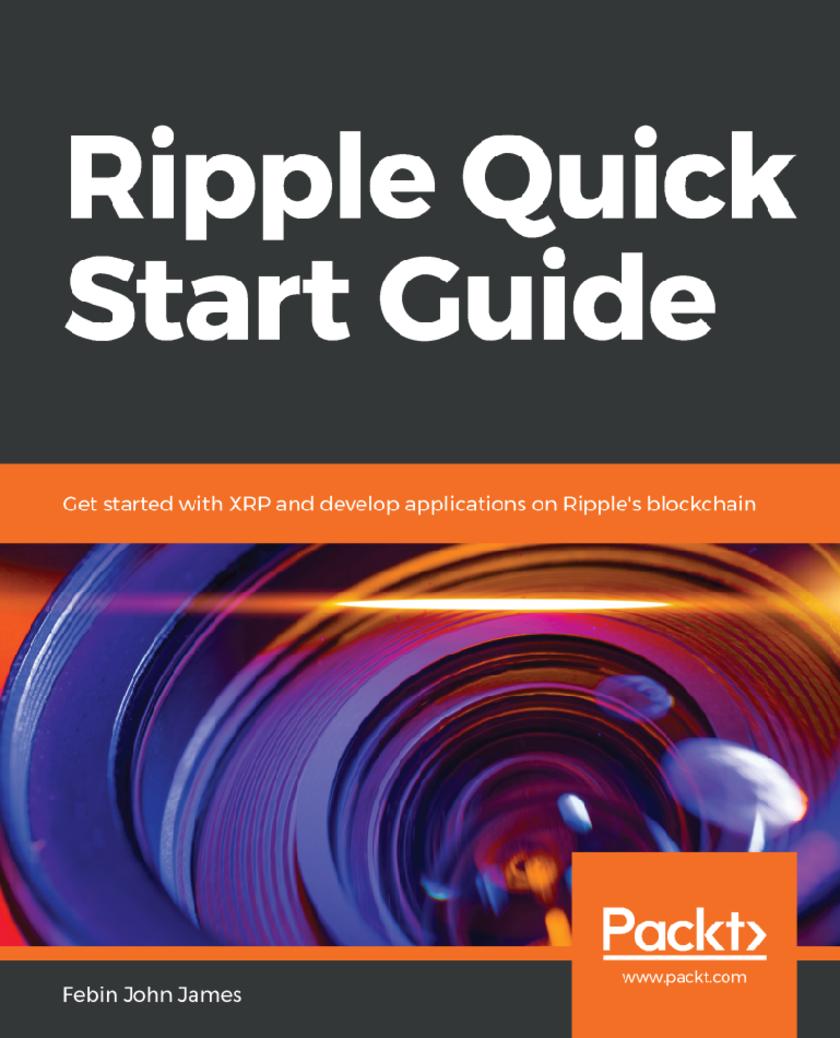
Ripple Quick Start Guide
¥54.49
Learn to work with XRP and build applications on Ripple's blockchain Key Features *Learn to use Ripple’s decentralized system for transfering digital assets globally *A simpilfied and shortened learning curve to understand the Ripple innovation and Blockchain *Takes a hands-on approach to work with XRP – Ripple’s native currency Book Description This book starts by giving you an understanding of the basics of blockchain and the Ripple protocol. You will then get some hands-on experience of working with XRP. You will learn how to set up a Ripple wallet and see how seamlessly you can transfer money abroad. You will learn about different types of wallets through which you can store and transact XRP, along with the security precautions you need to take to keep your money safe. Since Ripple is currency agnostic, it can enable the transfer of value in USD, EUR, and any other currency. You can even transfer digital assets using Ripple. You will see how you can pay an international merchant with their own native currency and how Ripple can exchange it on the ?y. Once you understand the applications of Ripple, you will learn how to create a conditionally-held escrow using the Ripple API, and how to send and cash checks. Finally, you will also understand the common misconceptions people have about Ripple and discover the potential risks you must consider before making investment decisions. By the end of this book, you will have a solid foundation for working with Ripple's blockchain. Using it, you will be able to solve problems caused by traditional systems in your respective industry. What you will learn *Understand the fundamentals of blockchain and Ripple *Learn how to choose a Ripple wallet *Set up a Ripple wallet to send and receive XRP *Learn how to protect your XRP *Understand the applications of Ripple *Learn how to work with the Ripple API *Learn how to build applications on check and escrow features of Ripple Who this book is for This book is for anyone interested in getting their hands on Ripple technology and learn where it can be used to gain competitive advantages in their respective fields. For most parts of the book, you need not have any pre-requisite knowledge. However, you need to have basic background of JavaScript to write an escrow.
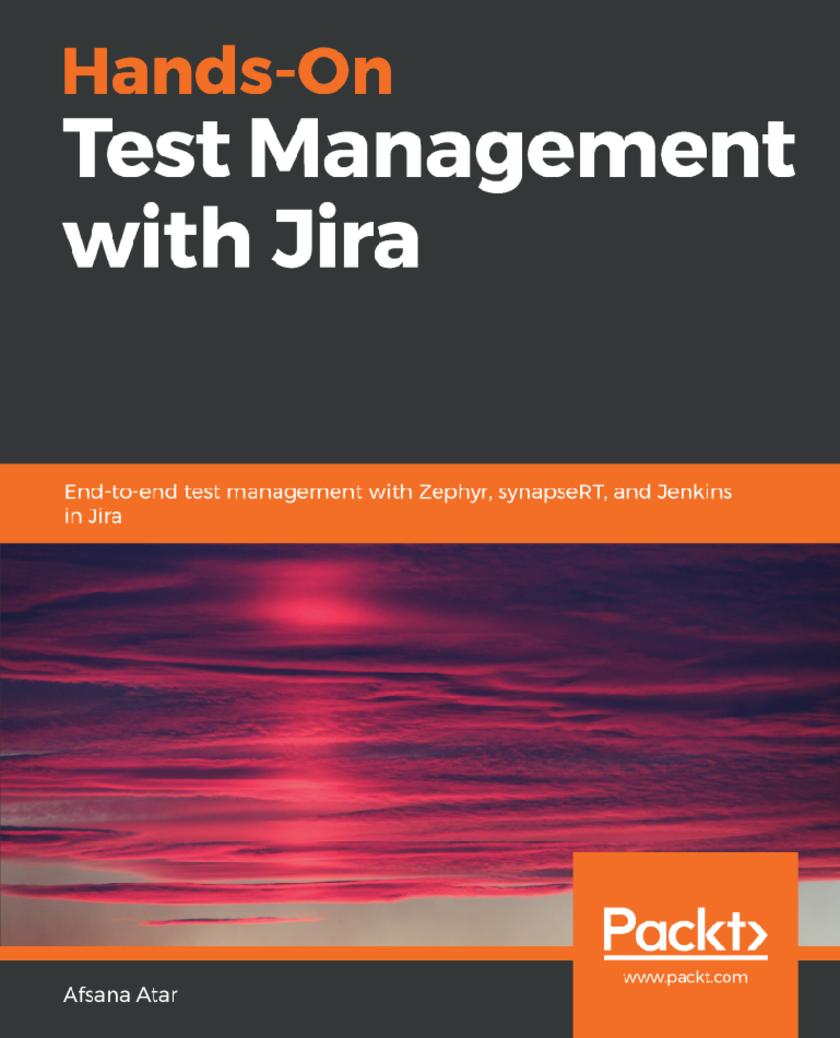
Hands-On Test Management with Jira
¥54.49
Learn best practices for testing with Jira and model industry workflows that can be used during the software development lifecycle Key Features * Integrate Jira with test management tools such as Zephyr, Test Management, and SynapseRT * Understand test case management, traceability, and test execution with reports * Implement continuous integration using Jira, Jenkins, and automated testing tools Book Description Hands-On Test Management with Jira begins by introducing you to the basic concepts of Jira and takes you through real-world software testing processes followed by various organizations. As you progress through the chapters, the book explores and compares the three most popular Jira plugins—Zephyr, Test Management, and synapseRT. With this book, you’ll gain a practical understanding of test management processes using Jira. You’ll learn how to create and manage projects, create Jira tickets to manage customer requirements, and track Jira tickets. You’ll also understand how to develop test plans, test cases, and test suites, and create defects and requirement traceability matrices, as well as generating reports in Jira. Toward the end, you’ll understand how Jira can help the SQA teams to use the DevOps pipeline for automating execution and managing test cases. You’ll get to grips with configuring Jira with Jenkins to execute automated test cases in Selenium. By the end of this book, you’ll have gained a clear understanding of how to model and implement test management processes using Jira. What you will learn * Understand QMS to effectively implement quality systems in your organization * Explore a business-driven structured approach to Test Management using TMap NEXT * Implement different aspects of test planning, test strategy, and test execution * Organize and manage Agile projects in Scrum and Kanban * Uncover Jira plugins available in the Atlassian Marketplace for testing and project management * Configure a DevOps pipeline for continuous integration using Jira with Jenkins Who this book is for If you’re a quality assurance professional, software project manager, or test manager interested in learning test management best practices in your team or organization, this book is for you. Prior knowledge of test management and Jenkins will be beneficial in understanding the concepts covered in this book.

Learn Chart.js
¥54.49
Design interactive graphics and visuals for your data-driven applications using the popular open-source Chart.js data visualization library. Key Features * Harness the power of JavaScript, HTML, and CSS to create interactive visualizations * Display quantitative information efficiently in the form of attractive charts by using Chart.js * A practical guide for creating data-driven applications using open-source JavaScript library Book Description Chart.js is a free, open-source data visualization library, maintained by an active community of developers in GitHub, where it rates as the second most popular data visualization library. If you want to quickly create responsive Web-based data visualizations for the Web, Chart.js is a great choice. This book guides the reader through dozens of practical examples, complete with code you can run and modify as you wish. It is a practical hands-on introduction to Chart.js. If you have basic knowledge of HTML, CSS and JavaScript you can learn to create beautiful interactive Web Canvas-based visualizations for your data using Chart.js. This book will help you set up Chart.js in a Web page and show how to create each one of the eight Chart.js chart types. You will also learn how to configure most properties that override Chart’s default styles and behaviors. Practical applications of Chart.js are exemplified using real data files obtained from public data portals. You will learn how to load, parse, filter and select the data you wish to display from those files. You will also learn how to create visualizations that reveal patterns in the data. This book is based on Chart.js version 2.7.3 and ES2015 JavaScript. By the end of the book, you will be able to create beautiful, efficient and interactive data visualizations for the Web using Chart.js. What you will learn * Learn how to create interactive and responsive data visualizations using Chart.js * Learn how to create Canvas-based graphics without Canvas programming * Create composite charts and configure animated data updates and transitions * Efficiently display quantitative information using bar and line charts, scatterplots, and pie charts * Learn how to load, parse, and filter external files in JSON and CSV formats * Understand the benefits of using a data visualization framework Who this book is for The ideal target audience of this book includes web developers and designers, data journalists, data scientists and artists who wish to create interactive data visualizations for the Web. Basic knowledge of HTML, CSS, and JavaScript is required. No Canvas knowledge is necessary.
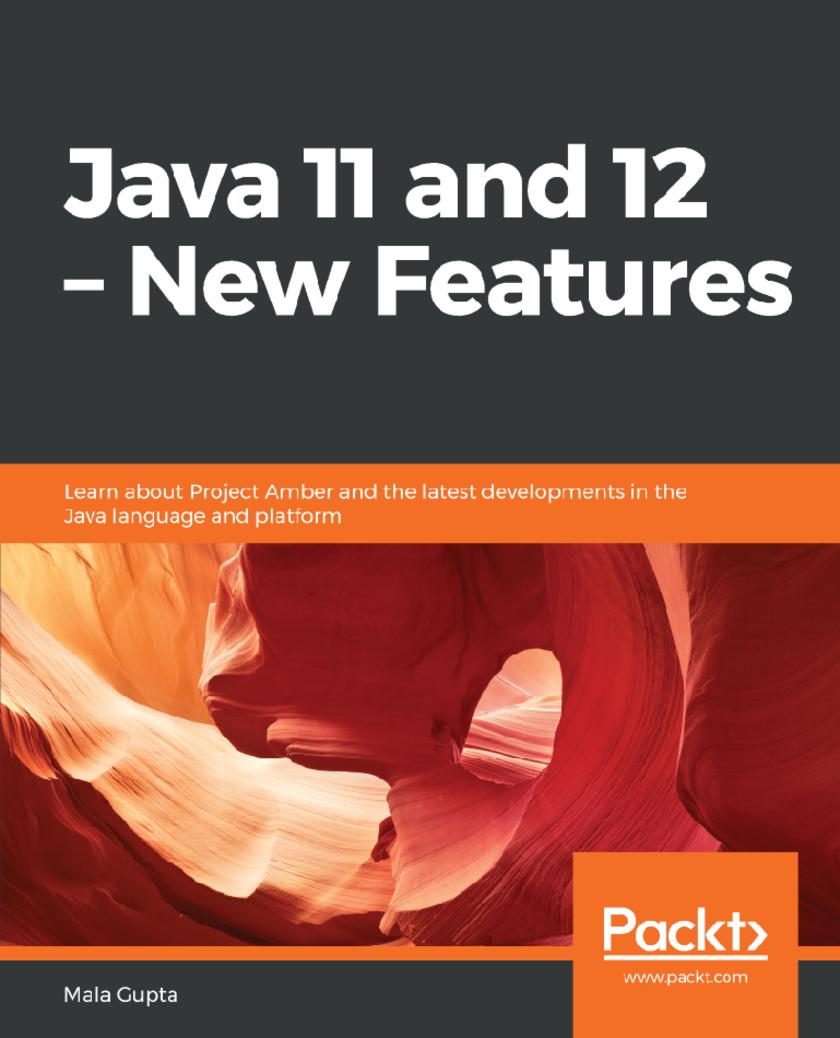
Java 11 and 12 – New Features
¥54.49
Enhance your development skills with Java’s state-of-the-art features and projects to make your applications leaner and faster Key Features * Overcome the challenges involved in migrating to new versions of Java * Discover how Oracle has bridged the gap between Java and native code * Make the best use of new Java features and libraries in your applications Book Description With its new six-monthly release cadence, Java is moving forward faster. In addition to planned version releases, a lot of work is currently being undertaken on various Java projects at Oracle. In order to make best use of the new features in their applications and libraries, you must be well-versed with the most recent advancements. Java 11 and 12 – New Features will take you through the latest developments in Java, right from variable type inference and simplified multithreading through to performance improvements, which are covered in depth to help you make your applications more efficient. This book explains the relevance and applicability of Java's new features, and answers your questions on whether to invest in migrating to new Java versions and when to migrate. You'll also get to grips with platform features, such as AppCDS and new garbage collectors, to tune and optimize your application—from reduced launch time and latency to improved performance and throughput. By the end of this book, you will be equipped with a thorough understanding of the new features of Java 11, 12, and Project Amber, and possess the skills to apply them with a view to improving your application's performance. What you will learn * Study type interference and how to work with the var type * Understand Class-Data Sharing, its benefits, and limitations * Discover platform options to reduce your application’s launch time * Improve application performance by switching garbage collectors * Get up to date with the new Java release cadence * Define and assess decision criteria for migrating to a new version of Java Who this book is for If you’re an executive or solutions architect responsible for technology selection or Java migration decisions, this Java book is for you. You’ll also benefit from this book if you’re a computer science enthusiast curious to learn about the latest and upcoming Java features. This book will help you migrate your solutions from Java 8 or older to the latest Java release.
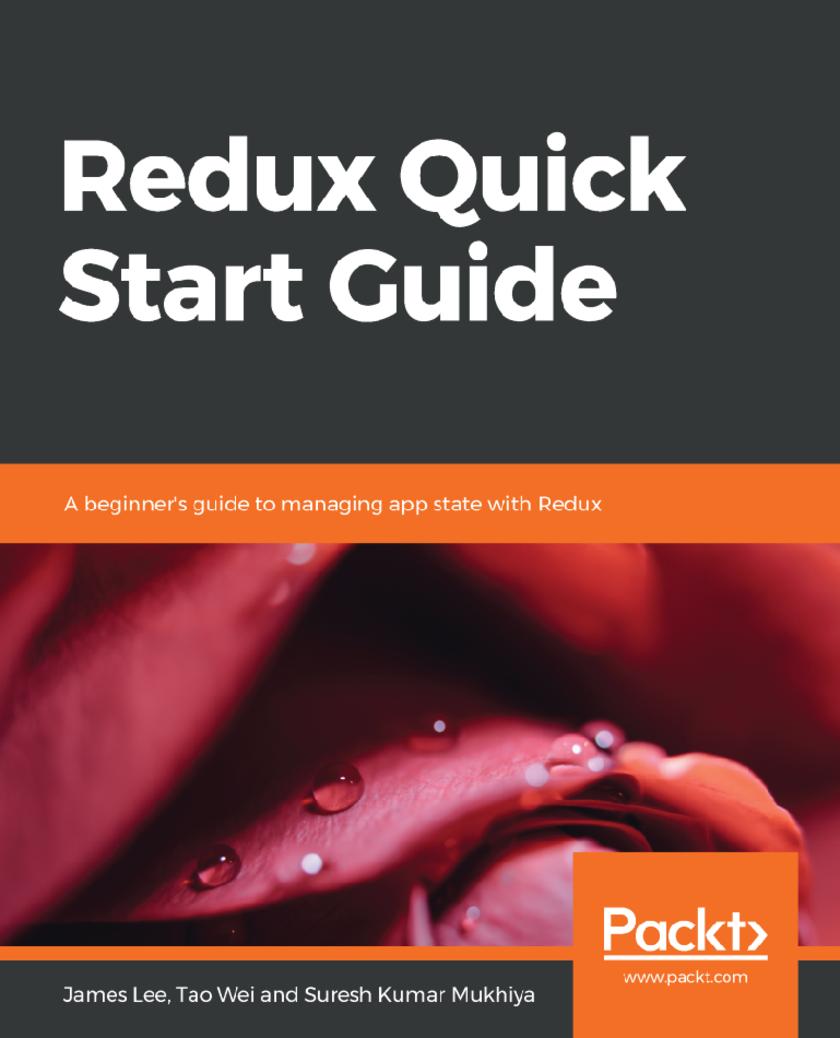
Redux Quick Start Guide
¥54.49
Integrate Redux with React and other front-end JavaScript frameworks efficiently and manage application states effectively Key Features * Get better at building web applications with state management using Redux * Learn the fundamentals of Redux to structure your app more efficiently * This guide will teach you develop complex apps that would be easier to maintain Book Description Starting with a detailed overview of Redux, we will follow the test-driven development (TDD) approach to develop single-page applications. We will set up JEST for testing and use JEST to test React, Redux, Redux-Sage, Reducers, and other components. We will then add important middleware and set up immutableJS in our application. We will use common data structures such as Map, List, Set, and OrderedList from the immutableJS framework. We will then add user interfaces using ReactJS, Redux-Form, and Ant Design. We will explore the use of react-router-dom and its functions. We will create a list of routes that we will need in order to create our application, and explore routing on the server site and create the required routes for our application. We will then debug our application and integrate Redux Dev tools. We will then set up our API server and create the API required for our application. We will dive into a modern approach to structuring our server site components in terms of Model, Controller, Helper functions, and utilities functions. We will explore the use of NodeJS with Express to build the REST API components. Finally, we will venture into the possibilities of extending the application for further research, including deployment and optimization. What you will learn * Follow the test-driven development (TDD) approach to develop a single-page application * Add important middleware, such as Redux store middleware, redux-saga middleware, and language middleware, to your application * Understand how to use immutableJS in your application * Build interactive components using ReactJS * Configure react-router-redux and explore the differences between react-router-dom and react-router-redux * Use Redux Dev tools to debug your application * Set up our API server and create the API required for our application Who this book is for This book is meant for JavaScript developers interesting in learning state management and building easy to maintain web applications.
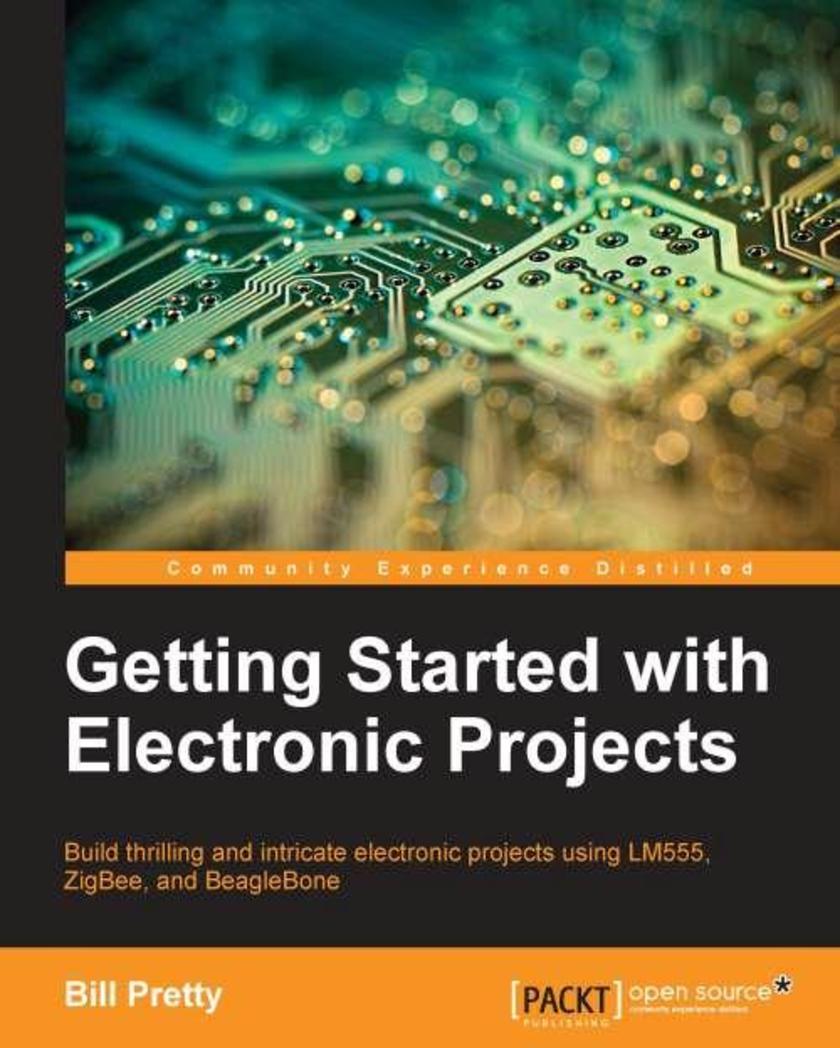
Getting Started with Electronic Projects
¥54.49
This book is aimed at hobbyists with basic knowledge of electronics circuits. Whether you are a novice electronics project builder, a ham radio enthusiast, or a BeagleBone tinkerer, you will love this book.
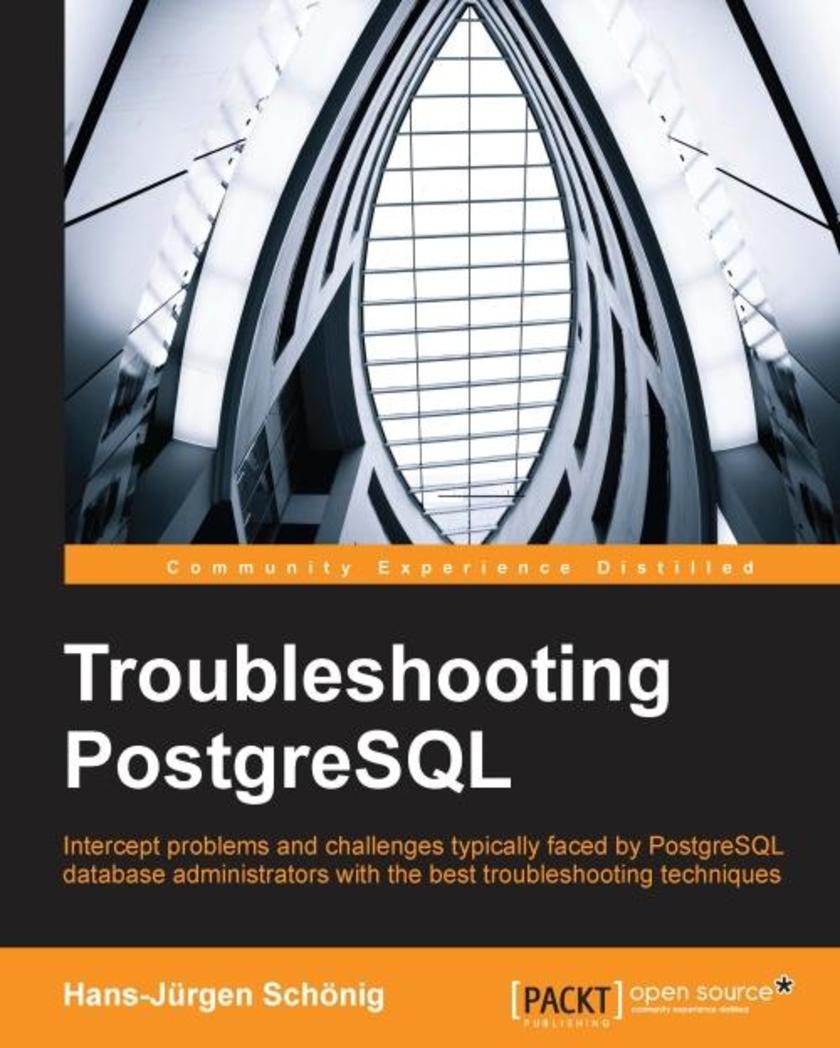
Troubleshooting PostgreSQL
¥54.49
If you are a database administrator looking for solutions to common PostgreSQL problems, this is the book for you. The book is suitable for people with intermediate and professional expertise.
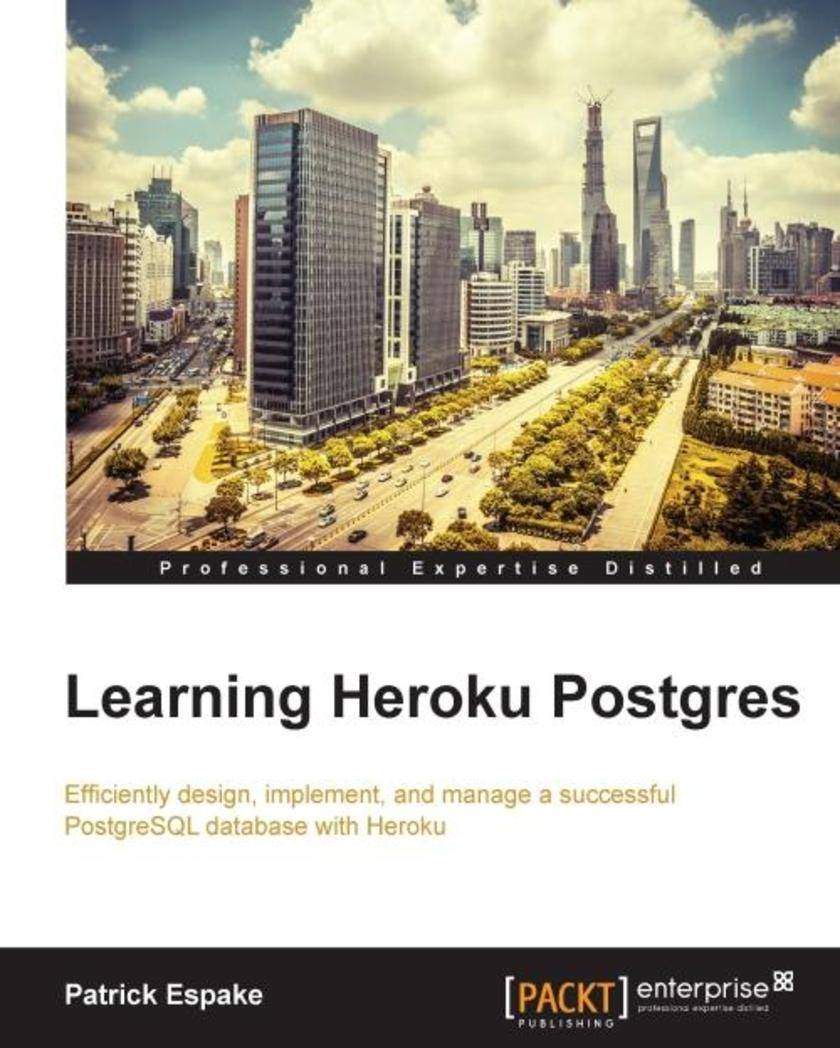
Learning Heroku Postgres
¥54.49
Learning Heroku Postgres is targeted at developers and database admins. Even if you're new to Heroku Postgres, you'll be able to master both the basic as well as advanced features of Heroku Postgres. Since Heroku Postgres is incredibly user-friendly, no previous experience in computer coding or programming is required.
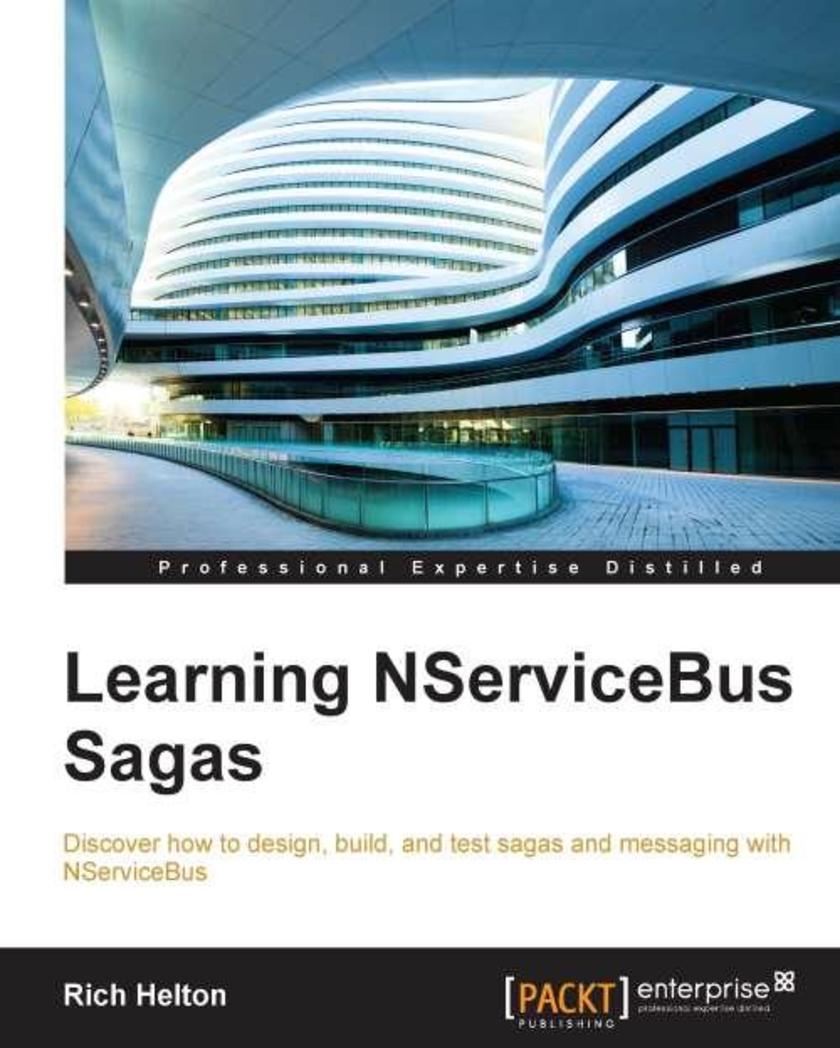
Learning NServiceBus Sagas
¥54.49
If you are an Enterprise C# developer who wishes to extend your knowledge of NServiceBus and Enterprise Service Bus in C#, this is the book for you. This book is designed to enhance the education of ESBs and their messaging, whether you are a beginner or a seasoned expert in Enterprise C#, Apex, and Visualforce pages.
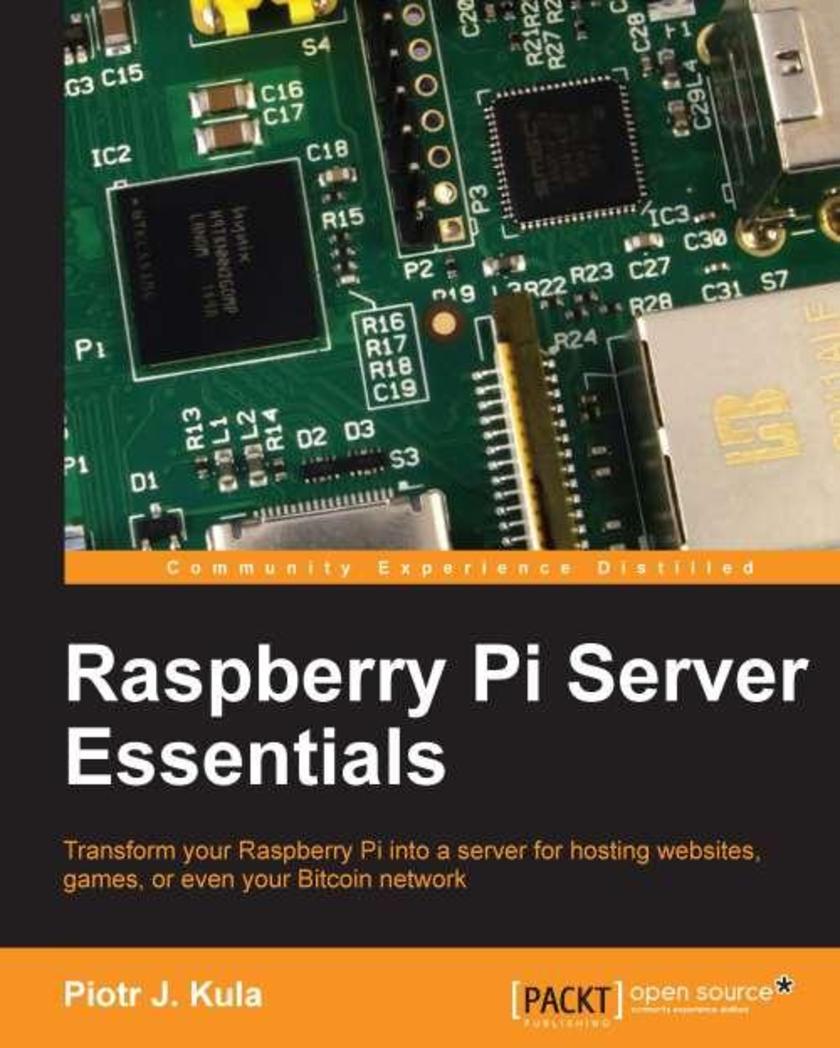
Raspberry Pi Server
¥54.49
This is an engaging, easy to follow guide for developing a wide range of server projects with Raspberry Pi This book is targeted towards all Raspberry Pi enthusiasts who are interested in exploring the potential of Pi as a server. Even if you have no prior experience with the Raspberry Pi, you can pick up this book and develop a wide range of projects.

BeagleBone Essentials
¥54.49
If you are a developer with some hardware or electrical engineering experience who wants to learn how to use embedded machine-learning capabilities and get access to a GNU/Linux device driver to collect data from a peripheral or to control a device, this is the book for you.
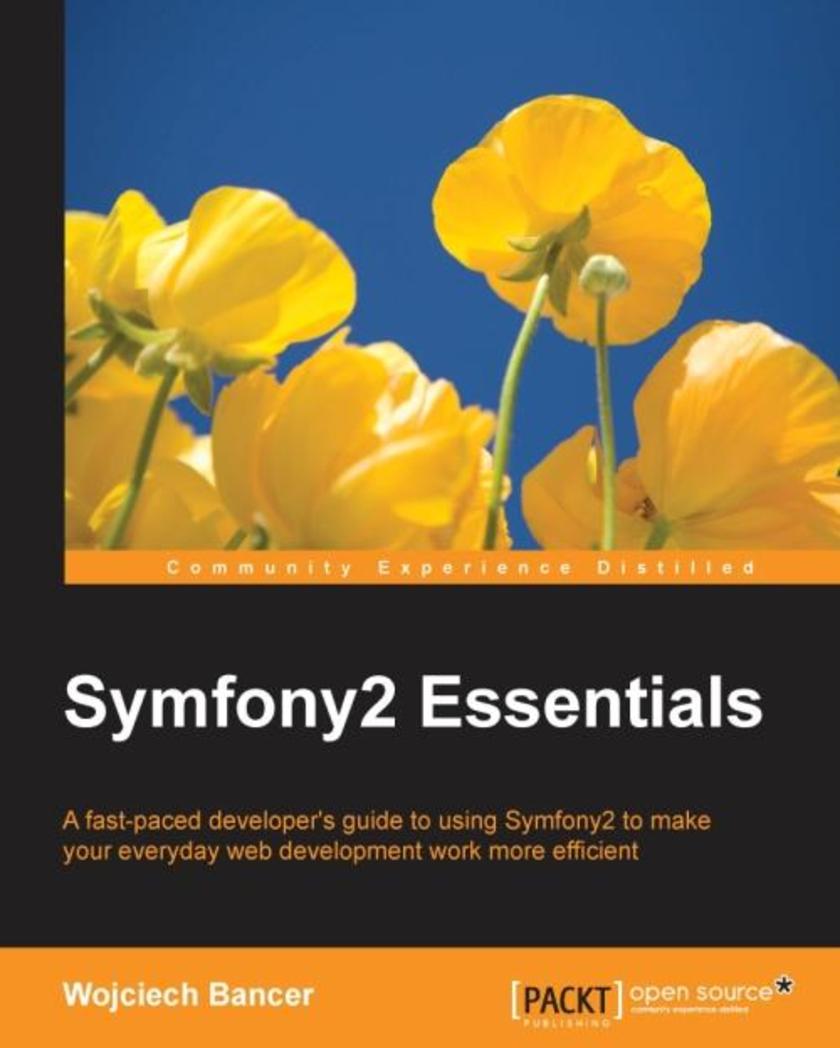
Symfony2 Essentials
¥54.49
A fast-paced developer's guide to using Symfony2 to make your everyday web development work more efficient Key Features Build web applications with the latest features of Symfony2 Focus on common tasks such as creating CRUD, creating an API, and providing a login Install and configure Symfony2 and evaluate it for your everyday needs Who This Book Is For This book is aimed at experienced programmers, especially those familiar with a closely related technology such as Yii or Laravel, but who now want to learn Symfony quickly. This book will also prove beneficial for experienced PHP developers who want to explore and evaluate new frameworks and their possibilities in day-to-day tasks. What You Will Learn Familiarise yourself with the Symfony framework, its latest features, and how to install it Discover the concept of bundles and their application Handle translations within Symfony, enable translations, and learn how to handle database translations Understand Symfony's security model, how to secure applications, and implement a custom authentication provider by using FOSUserBundle Explore the use of Twig, find best practices around its usage, and discover its common pitfalls Create internal commands that will handle sending e-mail reminders for your app Develop a plugin for the profiler to provide custom information about your application Deploy applications based on Symfony2 using various methods including simple FTP copying, rsync, CI deployment, and more In Detail Symfony is a free and open source PHP MVC web application development framework, which helps you create and maintain web applications and replace recurrent coding tasks. It integrates with an independent library, PHPUnit, to give you a rich testing framework. It is one of the best and most popular frameworks available on the market. Popular projects such as Drupal, Laravel, and phpBB also use Symfony. Its well-organized structure, clean code, and good programming practices make web development a breeze. Symfony2 Essentials will guide you through the process of creating a sample web application with Symfony2. You will create a To-Do application, using a few of the most commonly used Symfony2 components, and discover how to perform these development tasks efficiently. This book introduces you to the Symfony framework with a quick installation guide and a brief explanation of its key features including the MVC architecture, twig templating, dependency injection, and more. You will learn to manage dependencies, create controllers, views, and API calls, and secure your application. Next, you will go through the steps that are common for most web applications, which include writing CRUD and AJAX, handling forms, validation, translations, and the command-line interface, and e-mail sending features. The book ends with best practices, debugging, profiling, and deployment procedures. By the end of this book, you will have learned how to combine a Symfony2 framework with other open source code to speed up the development process. Style and approach A fast-paced, step-by-step guide with examples on how to write the most common pieces of code while developing typical web applications with Symfony.




 购物车
购物车 个人中心
个人中心



